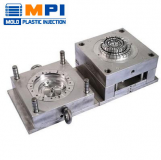Welcome to the realm of plastic injection molding machines, where creativity merges with precision engineering. In this guide, we embark on a journey to explore the captivating process of how plastic injection molding machines operate, unveiling each step with clarity and insight. Understanding how these machines work is key to appreciating their significance in modern manufacturing processes. Here we’ll explore the fascinating process of plastic injection molding, uncovering the mechanics behind how these machines operate to transform raw plastic materials into finished products. Come study how plastic injection molding machines work and how they are important in creating the planet. Perhaps you’re a beginner interested in learning more about how they are made or an experienced expert seeking to further your skills.

How do plastic injection molding machines work?
Material Preparation: Raw plastic material, typically in the form of pellets, is fed into a hopper attached to the injection molding machine.
Heating: The plastic pellets are heated and melted inside the machine’s barrel, which is equipped with heating elements.
Injection: Once the plastic is molten, a screw mechanism or plunger pushes it forward into a mold cavity.
Mold Closure: The mold cavity is closed securely to prevent any leakage of molten plastic during injection.
Injection of Molten Plastic: The molten plastic is injected into the mold cavity under high pressure, filling it completely.
Cooling: When the material is finally placed into the mold, this allows time cool down and become solid inside the form.
Ejection: Once the plastic has cooled and solidified, the mold opens, and the newly formed plastic part is ejected from the mold cavity.
Repeat Process: The injection molding process can be repeated continuously to produce large quantities of identical plastic parts with high precision and efficiency.
What are the advantages of plastic injection molding machines?
Excellent Effort: Plastic injection molding machines are very effective for production in large numbers because they can quickly and safely make huge amounts of similar components.
Versatility: These machines can accommodate a wide range of plastic materials and part designs, allowing for versatility in manufacturing various products.
High Precision: Injection molding machines can produce parts with tight tolerances and precise dimensions, ensuring uniformity and quality across all produced parts.
Reduced Waste: The automated nature of plastic injection molding minimizes material waste, as only the required amount of plastic is used for each part.
Strength and Durability: Plastic injection-molded items may be made to be very strong, resilient to damage, drugs, and elements, and powerful.
Automation: A fully automatic injection molding machine can reduce the demand for worker effort and improve quality and safety of results.
Environmental Benefits: Injection molding can use recyclable plastics and generate minimal waste, making it a more environmentally friendly manufacturing option compared to other processes.
What is the best place to learn more about plastic injection molding machines
Ex MOULD Co., Ltd. is a great resource for those who want to find out more about plastic injection molding machines. Detailed materials and data on all kinds of injection-molded plastic topics, such as machine operation, care advice, and latest changes , are offered on the site. EX MOULD Co., Ltd. offers a great deal of know-how in the sector and can give newcomers and experts expert guidance. Their website is an excellent option to learn more about plastic injection molding devices, whether you are wishing to improve your skills or solve specific issues.
FAQs
Why is the plastic product warmed during the injection molding stage?
Heating the plastic material makes it molten and easier to flow into the mold cavity, ensuring it fills the mold completely and takes on its shape.
How is the plastic material injected into the mold cavity?
The plastic material is pushed forward into the mold cavity by a screw mechanism or plunger under high pressure.
What happens to the plastic material after it is injected into the mold cavity?
The plastic material cools and solidifies inside the mold cavity, taking on the shape of the mold.
How is the newly formed plastic part ejected from the mold cavity?
The mold opens, and the newly formed plastic part is ejected using ejector pins or plates.
Are there any limitations or drawbacks to using plastic injection molding machines?
Some limitations include high initial investment costs, limited flexibility for small production runs, and challenges with certain types of part designs or materials.
Conclusion
In summary, plastic injection molding machines are essential in manufacturing, efficiently transforming molten plastic into a wide range of products. Their value for money, quick work, and variety make them useful in a number of fields, even with limits. Understanding their operation offers insight into modern manufacturing processes and their impact on our daily lives. We know of recent factories, and the way they impact every day of our lives can be developed by understanding how they work.

